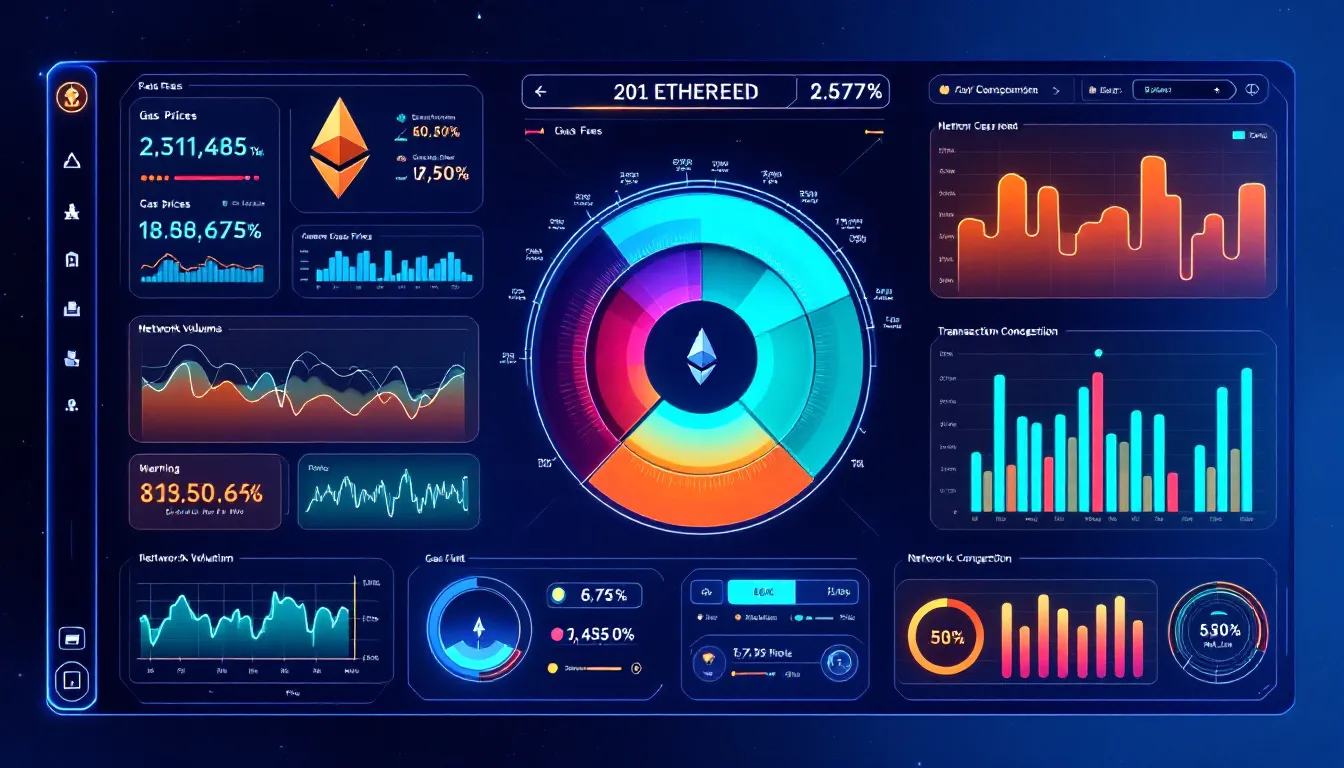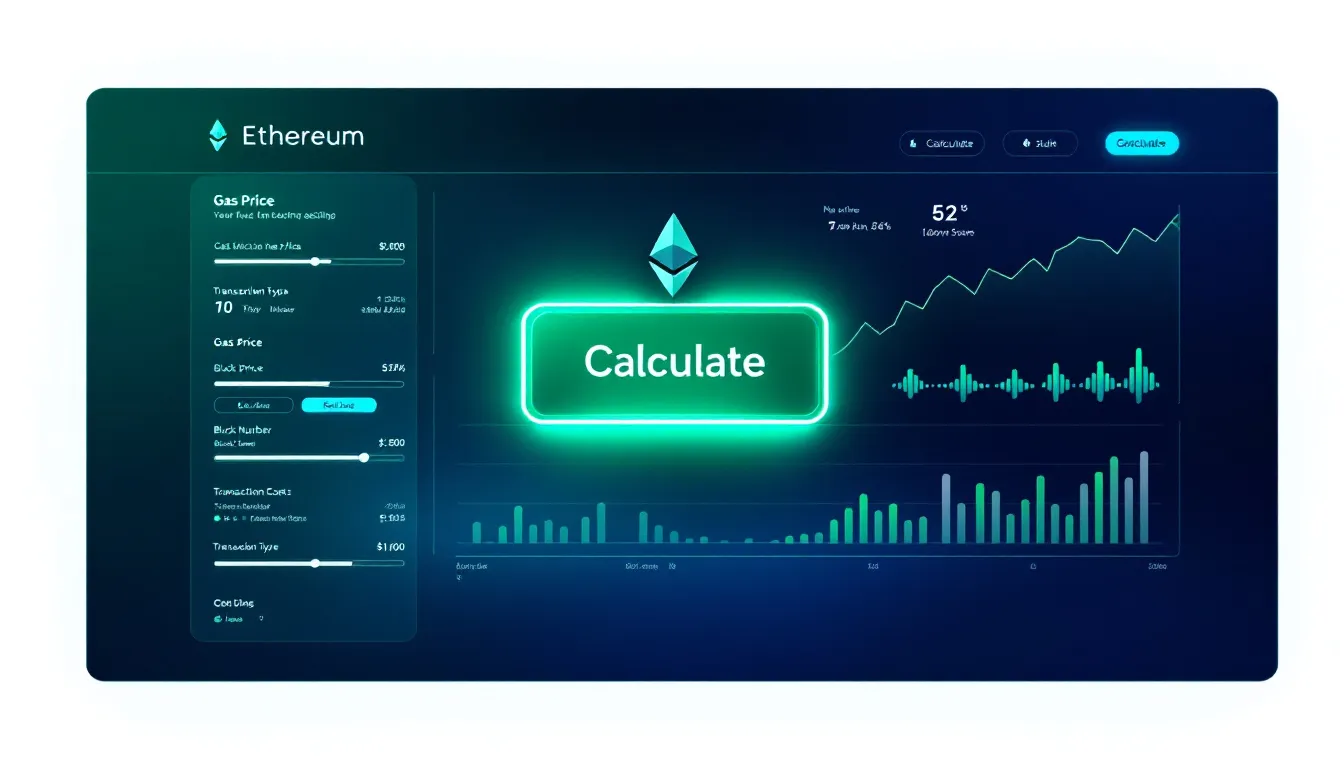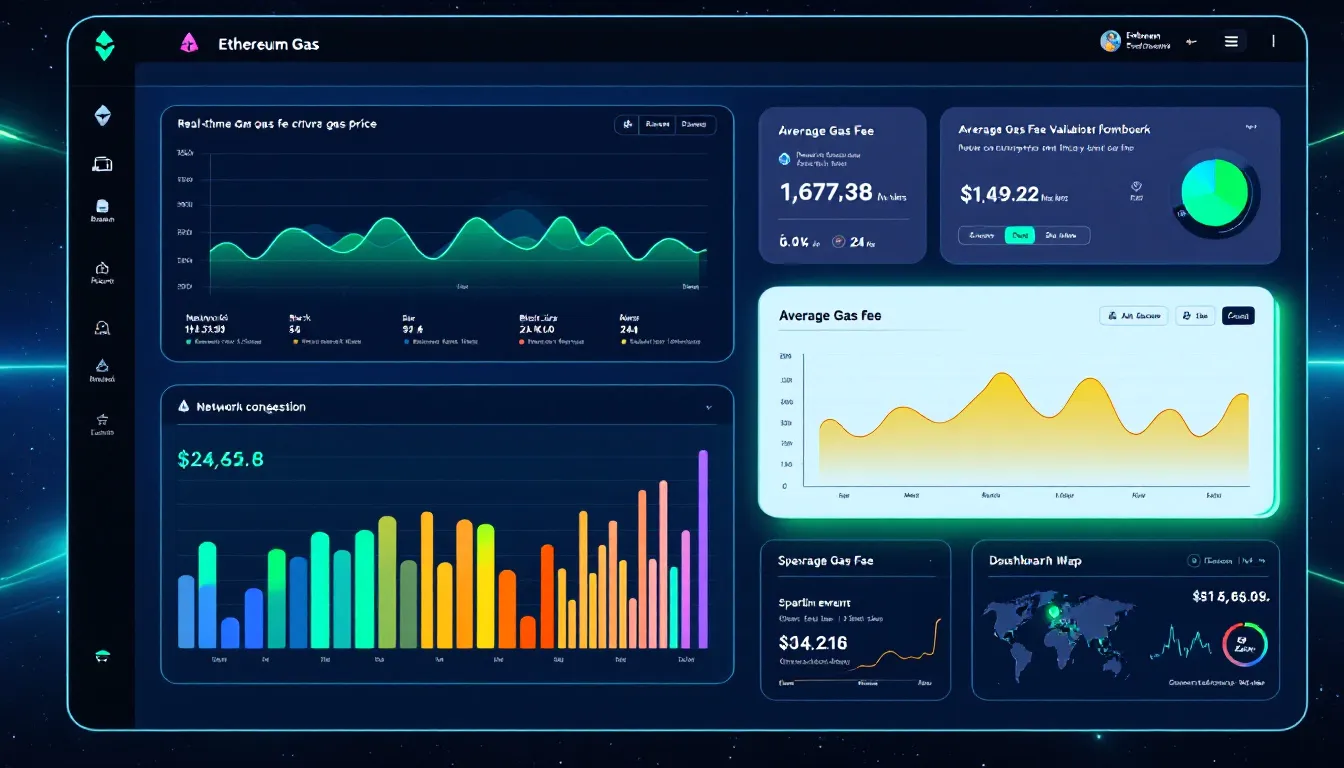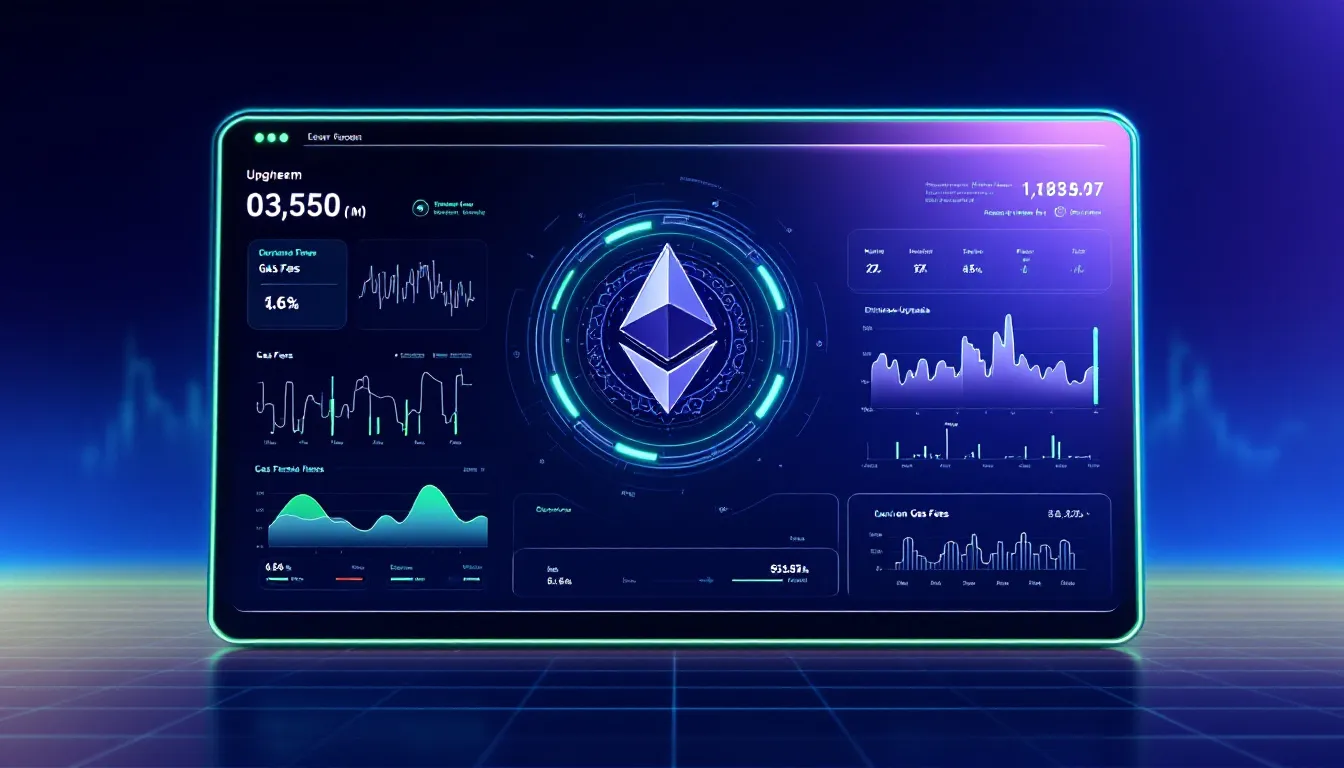Mastering the Ethereum Gas Fee Calculator: Save on Transaction Costs
An Ethereum gas fee calculator helps you accurately estimate transaction costs by allowing you to input gas price and limit. It gives tailored fee estimates in both ETH and USD, which is crucial for planning and saving on costs. By using this tool, you can avoid overpaying for transactions and ensure they are processed efficiently on the Ethereum network.
Key Takeaways
Understanding gas fees, measured in gwei, involves knowing the base fee, gas limit, and priority fee, crucial for managing transaction costs on Ethereum.
Ethereum gas fee calculators help estimate costs in both ETH and USD, allowing users to adjust parameters to optimize transaction fees based on urgency.
Factors like network congestion and transaction complexity can significantly impact gas fees, so timing transactions and using Layer 2 solutions are effective strategies for cost reduction.
Understanding Ethereum Gas Fees

The transaction costs on the Ethereum network, commonly referred to as gas fees, are crucial for rewarding validators who play a vital role in securing and staking ETH within the blockchain. These fees act as fuel that powers the execution of transactions and smart contracts on the Ethereum blockchain, playing a critical role in maintaining its operational integrity and security. In absence of these gas fees, not only would abuse become rampant, but also there would be inefficient allocation of computational resources across the network.
To calculate these transaction costs effectively, one must consider three fundamental elements: base fee, units of gas used indicating computational effort needed for an action taken by users along with priority fee or ‘tip’. The base fee is variable—it responds dynamically based typically upon current levels of demand affecting congestion experienced by ethereum networks, whereas those above units reflect amount of computing power required to complete a specific task.
In conclusion, while aiming to streamline their expenditure when transacting over this platform it’s imperative that individuals gain a thorough understanding of how such computations behind various types of components like supplemental voluntary payment known as “priority” ensure swift processing user’s individual instruction amidst high traffic periods thus enabling efficient management associated expenditures tied to actively respective operations conducted via Ethereum infrastructure.
What Are Gas Units?
On the Ethereum network, gas units serve as a measure of the computational effort necessary to carry out transactions or activate smart contracts. The amount of gas consumed differs with each operation on this network due to their respective resource demands and complexity levels. Deploying an elaborate smart contract will naturally require more gas units than conducting a straightforward ETH transfer.
Understanding the concept of a gas limit is also critical. It indicates the maximum amount of gas you are willing to expend on any given transaction, essentially setting your expense cap for that particular action. If you set a very low gas limit, there’s risk involved: not only might your transaction fail, but you’ll lose all associated fees spent up until that point. Ascertaining accurate estimates for how much gas various operations need and configuring suitable limits are key steps towards ensuring seamless execution of transactions while minimizing extra costs.
The Role of Gwei in Gas Pricing
The cost of gas on the Ethereum network is denoted in a unit called gwei, which serves as a smaller fraction of ether (ETH), with one gwei being equivalent to 0.000000001 ETH. This fractional measurement makes it easier to quantify and comprehend the expenses associated with gas prices since they are commonly represented in terms of gwei.
To determine the total fees for conducting a transaction, you take the gas limit—the maximum amount of units allocated for your transaction—and multiply it by the stated price per unit, measured in gwei. You can then express this total figure directly in ether by dividing it by one billion. Such calculations are essential when estimating and planning for costs incurred from transactions carried out over the Ethereum network.
How to Use an Ethereum Gas Fee Calculator

A gas fee calculator for Ethereum is a crucial tool that accurately predicts the cost of transactions, empowering you to make well-informed financial decisions. Utilizing resources like Etherscan’s gas tracker, these calculators enable you to enter specific details about your transaction and then provide customized estimates reflecting the current prices of gas. This aids in more effective budgeting and planning when carrying out transactions.
The primary advantage of using a gas fee calculator lies in its capability to convert estimated fees into both ETH and USD formats. It presents an understandable cost breakdown in whichever currency you prefer. By tweaking the inputs for the gas limit and price within such tools, one can visualize how alterations affect overall expenses—offering insights on how best to optimize costs while possibly reducing total fees associated with ethereum transactions.
Inputting Gas Price and Gas Limit
Utilizing a fee calculator specifically designed for Ethereum gas, it is imperative to enter both the unit price of gas you are prepared to spend and the cap on how much gas you would allocate for your transaction. The price per unit reflects your readiness to pay a specific amount of ether per unit of consumed gas, while the limit represents the total units of gas you’re ready to expend in order to complete your operation. By tweaking these figures within the calculator, one can explore how alterations influence their entire cost associated with executing transactions.
The urgency with which you require your transaction completed falls into three speeds: slow, standard (normal), or fast. Opting for slower processing may reduce overall expenses related but might also prolong completion times. On the flip side, accelerating processing incurs higher fees yet results in faster execution. Strategically managing this trade-off between time efficiency and financial outlay is crucial when conducting operations on Ethereum’s network.
Calculating Total Cost in ETH and USD
Utilizing a gas fee calculator can assist in determining the expense of gas fees in ETH, and it offers the convenience of converting that cost into USD to enhance understanding. This function proves particularly advantageous for individuals who opt to view expenses in a currency they are accustomed to.
Platforms such as Fees.wtf have capabilities that enable tracking of your accumulated gas fees over time and present an analysis of your overall outlay measured in USD.
Factors Influencing Gas Fee Variability

The fluctuation of gas fees on the Ethereum network is influenced by a variety of factors, with demand for the network and the complexity of transactions being key contributors. When there’s an uptick in transaction activity causing network congestion, competition for space within blocks intensifies, which results in escalating gas prices. Being aware of these elements can assist you in strategizing when to execute your transactions to avoid excessive fees.
Transactions that necessitate a greater level of computational work tend to have steeper gas costs attached to them. By acknowledging both how intricate your intended transactions are and staying abreast with current conditions on the Ethereum network, you can make more informed choices that help manage and minimize unexpected increases in gas expenses.
Network Congestion and Demand
The variability of gas fees on the Ethereum network is greatly influenced by both demand and network congestion. When there is an upsurge in activity, like during NFT drops or the kickoff of DeFi services, heightened competition can cause a sharp increase in gas prices due to more users vying for their transactions to be processed.
Heavy traffic on the network puts pressure on validator capacities, which consequently drives up gas fees as a result of intensified bidding among users aiming for prompt transaction confirmations. Keeping an eye on these conditions and strategically timing your actions can lead to cost savings when you engage with the Ethereum blockchain during times of reduced activity and lower fee requirements.
Transaction Complexity
The intricacies of a transaction play a substantial role in determining its gas fees. Less complex activities, such as sending ETH, necessitate fewer units of gas than more intricate tasks like the execution of smart contracts due to their higher demand for computational power and resources.
It is essential to establish an accurate gas limit to ensure your transaction completes without excessive consumption of gas. Transactions with greater complexity might call for increased limits to cover the enhanced computational effort, potentially raising the overall cost.
Recognizing how complex your transactions are can assist you in optimizing your management of both gas usage and associated costs.
Strategies to Minimize Ethereum Gas Fees

Strategically lowering the cost of Ethereum gas fees requires informed planning and leveraging different approaches. To decrease expenses, it is beneficial to execute transactions when network activity wanes and adopt Layer 2 solutions crafted for easing congestion. This can notably reduce your expenditures on gas.
Leveraging tools such as gas fee calculators helps in forecasting and refining ethereum gas costs prior to executing any transaction. Services like GasHawk can automatically aid in economizing on the fees associated with these transactions, thus advancing your ability to manage costs effectively.
By adopting these measures, you stand a better chance at conducting ethereum transactions that are not only more economical but also efficient.
Timing Transactions
One of the simplest yet most effective strategies to reduce gas fees is timing your transactions during off-peak hours. Weekends, late evenings, and early mornings typically see lower network activity, resulting in a lower gas price. Analyzing trends in gas prices and network activity helps identify optimal times for transacting.
Paying attention to these patterns and planning your transactions accordingly can lead to significant savings. This proactive approach allows you to avoid high gas fees and make your Ethereum transactions more cost-effective.
Utilizing Layer 2 Solutions
By utilizing Layer 2 protocols, which handle transactions away from the primary Ethereum blockchain, users can experience lower gas fees. Platforms like Polygon, Arbitrum, and Optimism employ strategies such as optimistic rollups to accelerate transaction processing times while diminishing expenses. This aids in decreasing traffic on the mainnet of Ethereum and enhances both the efficiency and cost-effectiveness of executing transactions.
Optimistic rollups contribute to this improvement by conducting transaction operations off-chain with only occasional verification needed from the main chain. The outcome is an uptick in overall effectiveness coupled with a reduction in strain placed upon the network associated with Ethereum. Consequently, this results in diminished gas costs for individuals interacting with ethereum’s system.
Advanced Tips for Optimizing Gas Usage
For individuals aiming to enhance their gas usage efficiency, employing advanced strategies such as utilizing gas tokens and refining smart contract codes can lead to substantial benefits. Gas tokens enable users to buy gas in advance when the market activity is low, thereby securing lower rates that could result in considerable savings on subsequent transactions.
The process of optimizing a smart contract entails crafting well-designed code with an emphasis on reducing the amount of gas it uses. Tools like the Tenderly Gas Profiler are instrumental for examining how much gas specific functions consume, offering valuable insights into which parts may be optimized to diminish costs.
Adopting these sophisticated tactics not only augments efficiency, but also helps save expenses associated with Ethereum-based transactions for users who put them into practice.
Using Gas Tokens
Gas tokens present a novel approach to mitigating gas costs within the Ethereum network. By acquiring these tokens when market activity is reduced, one can safeguard against future hikes in gas prices. The process secures more favorable rates for gas, leading to savings on transaction costs amid rising gas prices.
Nevertheless, it’s critical to take into account fluctuations in market value and platform compatibility regarding the use of gas tokens. Acknowledging these elements assists users in making educated choices and optimizes the advantages of employing gas tokens for managing expenses on transactions across the network.
Smart Contract Optimization
Optimization of smart contracts is essential for minimizing gas fees associated with Ethereum transactions. By crafting code that utilizes minimal on-chain data and conserves gas, you can markedly cut down the costs incurred per transaction. Employing strategies like opting for mappings over arrays when storing data, as well as designating variables as constant or immutable, assists in diminishing the amount of gas required.
Making use of external visibility modifiers aids in reducing the consumption of gas by permitting parameters to be accessed directly from calldata. Applying these optimization methods guarantees more efficient execution of your smart contracts, which contributes to lowering expenses related to gas fees.
Impact of Ethereum Upgrades on Gas Fees

Significant modifications to Ethereum have notably influenced the dynamics of gas fees. The introduction of EIP-1559 with the London upgrade altered how these fees are structured, incorporating both a base fee and priority fee into its design. This change aimed at offering users more predictable and straightforward transaction costs by eliminating the previously tumultuous auction-style method used to set prices. Under this new system, network conditions determine the base fee, while users can opt to pay an additional priority fee for faster processing of their transactions.
The profound shift in Ethereum’s infrastructure brought on by the Merge—a move from Proof-of-Work to Proof-of-Stake—has also had repercussions on gas pricing mechanisms. Though primarily focused on boosting environmental sustainability and operational scalability, it was anticipated that there would be some indirect effects on how gas fees operate within this framework.
Looking ahead towards future enhancements such as sharding could lead to reductions in transaction costs due mainly to increased efficiency across the network and a more balanced distribution of computational demand.
Post-London Upgrade Changes
Prior to the London upgrade, users faced significant unpredictability with gas fees as a result of an erratic bidding system. With EIP-1559’s implementation, a base fee that fluctuates in response to network demand was introduced, streamlining the estimation process for users and enabling them to better anticipate transaction costs.
This enhancement brought about the notion of a priority fee—a supplementary amount individuals can offer when they wish their transactions processed swiftly during times when network traffic is high. This aspect encourages validators to prioritize these transactions and thus gives users more control over how quickly their transaction is confirmed while managing associated expenses in a more efficient manner.
Future Projections Post-Merge
The completion of the Ethereum Merge in September 2022 signified a pivotal shift from a Proof-of-Work to a Proof-of-Stake mechanism, with objectives centered on enhancing both sustainability and scalability of the network. Although this transition didn’t directly result in lower gas fees, it established essential infrastructure for upcoming enhancements aimed at boosting network performance.
Anticipation is high for scalability solutions like sharding that propose to reduce gas fees by segmenting the network into easier-to-process pieces. As these progressive developments unfold within Ethereum, they are projected to make executing transactions not only more cost-effective but also faster, delivering widespread advantages to users throughout the platform.
Tools for Estimating and Tracking Gas Fees
Various tools are available to help users estimate and track Ethereum gas fees, providing real-time data and insights. Gas fee calculators are essential for forecasting transaction costs based on current gas prices and network conditions. These tools can calculate gas fees and convert estimated fees into any preferred currency, making it easier for users to understand their potential costs.
MetaMask and Etherscan are two of the most popular tools for estimating gas fees. They offer real-time data and allow users to modify gas price and gas limit settings for accurate fee estimation. Leveraging these tools helps users better manage their Ethereum transaction costs and optimize gas usage.
Etherscan and MetaMask
Utilizing Etherscan and MetaMask, users can precisely estimate the cost of Ethereum gas fees in alignment with current network conditions. Through these platforms, individuals are able to enter detailed parameters related to their transactions and obtain reliable estimates for costs, facilitating effective financial planning.
By providing options to modify both the gas price and gas limit within the Etherscan and MetaMask interfaces, users gain critical control over managing transaction expenses. This adaptability becomes particularly vital when the Ethereum network experiences heightened activity levels that could affect overall costs.
By accessing past data on these tools, users acquire a deeper understanding of fee trends on the Ethereum network. Such historical insights empower them with the knowledge needed to make well-informed choices concerning their transactions’ timings and potential fees.
Gas Price Trackers
Monitoring gas fees on the Ethereum network is crucial due to the ever-changing nature of gas prices, and utilizing tools such as gas price tracker browser extensions can be incredibly valuable. These trackers offer instantaneous updates that enable users to remain up-to-date with current gas prices, thereby allowing them to strategize their transactions effectively when the price of gas varies.
To circumvent high traffic times and gain from reduced transaction costs during periods of decreased congestion on the network, employing these tracking utilities can be especially advantageous. For frequent participants within the Ethereum landscape who are eager to minimize their expenses associated with each transaction, having access to such instruments for staying informed about fees is particularly beneficial.
Summary
Utilizing an Ethereum gas fee calculator adeptly and grasping the determinants that impact gas fees can culminate in substantial reductions in transaction costs. Optimize your management of gas fees by strategically timing transactions, incorporating Layer 2 solutions, and applying sophisticated optimization strategies. Enhance your efficiency on the Ethereum network by keeping abreast of Ethereum upgrades and utilizing resources such as Etherscan and MetaMask. By executing these tactics alongside effective tools, you can ensure your transactions on the Ethereum platform are not only more seamless but also cost-effective.
Frequently Asked Questions
What are Ethereum gas fees?
Ethereum gas fees are essentially the costs you pay to make transactions or run smart contracts on the Ethereum network. These fees reward the validators helping to keep the network secure and functioning smoothly.
How can I reduce my Ethereum gas fees?
You can cut down your Ethereum gas fees by timing your transactions during off-peak hours, using Layer 2 solutions, and optimizing your smart contracts.
Don’t forget to use gas fee calculators to help you estimate costs effectively!
What is the role of gwei in gas pricing?
Gwei plays a crucial role in gas pricing on the Ethereum network, as it’s the unit used to express gas costs, making it easier to understand and calculate transactions.
Remember, one gwei is one billionth of an ETH!
How do Ethereum upgrades affect gas fees?
Ethereum upgrades, like the London upgrade and the Merge, aim to make gas fees more predictable and pave the way for future improvements that could lower them. Essentially, these changes are designed to enhance the overall efficiency of the network.
What tools can help me estimate Ethereum gas fees?
To estimate Ethereum gas fees, you can use tools like Etherscan and MetaMask, along with gas fee calculators.
They’ll give you real-time insights, helping you save on transaction costs!